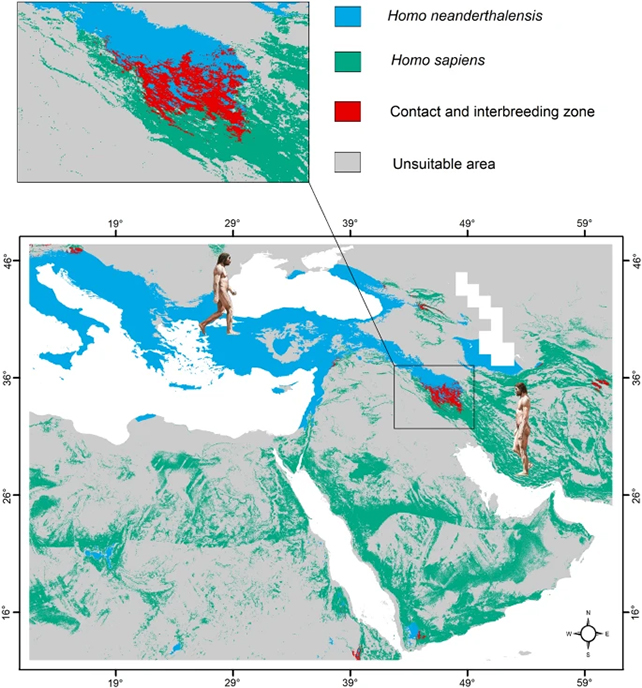When modern humans emerged from Africa, they explored far more than just new places. They encountered other human species, and in the Zagros Mountains of Iran, they did a heck of a lot more than just say hello.
New research suggests this is where Homo sapiens and Homo neanderthalensis interbred, changing the fate of at least our species, as we still carry Neanderthal DNA millennia later.
Archaeologist Saman Guran from Germany’s University of Cologne and colleagues used a combination of genetic, archaeological, topographical, and ecological data to narrow down the location.
“We believe that the Zagros Mountains acted as a corridor… facilitating northwards dispersal of [modern humans] and southwards dispersal of Neanderthals,” the team writes in their published paper.
This area includes one of the best-known Neanderthal sites, Shanidar Cave, where the remains of ten Neanderthal individuals were discovered, including the famous flower burial.
Discoveries such as these have revealed Neanderthals are far smarter, creative, and caring than we initially gave them credit for.
Guran and team’s modeling based on the multiple data sources suggests the Zagros Mountains are where the environmental conditions that best suit modern humans and those best suited to our now extinct cousins overlap.
It includes regions of colder habitats like the Neanderthals’ Palearctic birthplaces, as well as the warmer richer habitats of the Afrotropical realm that birthed our own species.
“Archaeological and fossil evidence indicates that [modern humans] entered southwestern Asia during [this time],” the researchers say.
The timing, between around 120 and 80 thousand years ago, coincides with the second wave of interbreeding that’s still written in our genes.
With its high biodiversity, the Zagros region also had enough resources to allow both species to exist side by side, and the variety of environments allowed for pockets of safety when climatic conditions got tough.
“The border areas of two realms are important in biology since they operate as refugia for species from glacial environments,” Guran and team explain.
It may have even been such shifts in climate conditions that drove both species closer together, increasing their interactions.

A single 65,000-year-old Neanderthal tooth, associated with a collection of stone tools, supports Guran and teams’ ecological modeling. It places Neanderthals in the right place during the right time.
What’s more, previous research has found similarities in facial features between Neanderthals and modern humans in this region as well.
Curiously, while we have ample evidence of Neanderthal DNA in humans, we have yet to find an example of modern human DNA in Neanderthals.
This may just be due to the scarcity of available DNA specimens from Neanderthals, or it may be that due to the 500,000 or so years of genetic separation between our two species, successful gene exchange was rare.
Guran and team encourage Iranian archeologists to investigate the area they’ve identified for further clues to such mysteries.
The two species of humans shared the Persian plateau for tens of thousands of years, before Neanderthals lost their grip on existence. Now all that remains alive of this other humanity lives on only thanks to these encounters.
This research was published in Scientific Reports.
#Modern #Humans #Neanderthals #ScienceAlert
